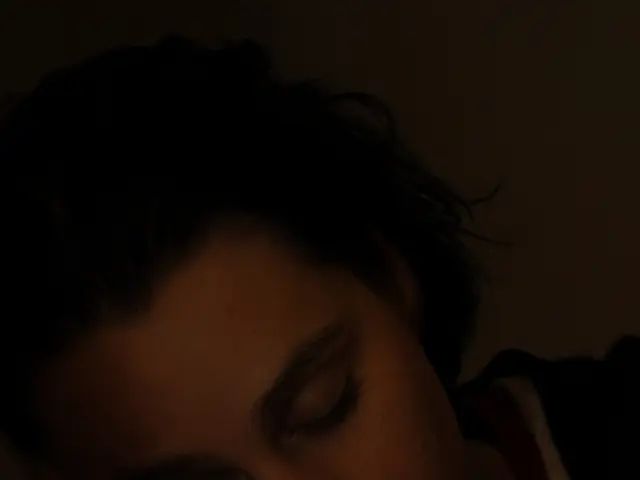Discussing Hair Restoration and Alma TED Technology: Dr. Howard Sobel Explanation
Modern Hair Magic: Introducing Ultrasound-Powered Alma TED
No more whispering about thinning crowns! Hair loss isn't just a guy thing anymore. In fact, female hair thinning is silently stealing the spotlight, making it one of the most underdiscussed cosmetic concerns today. But fear not, because Alma TED, the buzz-worthy ultrasound-driven hair restoration treatment, is here to save the day—and it's all about the ladies. We sat down with the one and only, Dr. Howard Sobel—cosmetic dermatologic surgery pioneer—to uncover the secrets behind Alma TED's success, its transformative effects on hair health, and how science is finally catching up to what many women have known all along: hair loss ain't just about vanity; it's about identity.
"The notion that hair loss is merely hereditary and hormone-based is way outdated," says Dr. Sobel. "It's time to recognize the myriad contributing factors, and we're finally treating them with the nuance they deserve."
So let's dive into the myth-busting, groundbreaking magic behind Alma TED—the prove-it-to-us game-changer for women's crowning glory.
Q: Any hints about your background and expertise in hair restoration and dermatology, Doc?
After my residency at Emory University School of Medicine, I became deeply entrenched in male and female pattern baldness. At the time, most dermatologists believed that 90% of hair loss was hereditary and caused by the hormone testosterone being converted to its active form DHT.
However, there are other factors that cause hair loss, and I spent years working alongside a biochemist to develop a compound to block DHT. Now, we only had minoxidil back then, which boosted blood flow to the hair follicle, enabling it to stay in a growing stage for longer. The search for answers never ends, but it's becoming clearer that hair loss is multifactorial and not solely hormone-based.
Q: Okay, so what are the most common hair loss concerns your patients bring to you, and what are the most frequent causes?
Genetics, age, stress, anemia, thyroid disorders, autoimmune diseases, hormonal imbalances, cancer treatments, nutritional deficiencies, pregnancy, and traction alopecia are the suspects in most cases of hair loss. Male pattern baldness is the perpetrator in the majority of men 20 and older, while in women, the cause rears its ugly head in their 30s and 40s.
Q: How does Alma TED play ball compared to traditional treatments, and what sets it apart in the world of non-invasive hair treatments? What kind of results can patients expect, and how soon can they see the miracle?
Alma TED works its magic by using sound waves and air pressure to open tiny pathways in the scalp, allowing for better serum penetration into the hair follicle. This innovative device offers nothing short of remarkable results, with a 20-60% increase in new hair growth in as little as 3-4 weeks.
Moreover, three to four weeks in, patients will notice an improvement in the cohesiveness and thickness of existing hairs. Alma TED comes armed with its own topical solution, packed with healing peptides and growth factors. In my practice, I emphasize the importance of supplementing the treatment with exosomes derived from the umbilical cord, which are brimming with growth factors.
Q: How does Alma TED measure up against PRP (Platelet-Rich Plasma) therapy or other hair loss treatments?
PRP is another non-invasive hair loss treatment. You'll have your blood drawn, spun, and then the plasma is injected into your scalp with growth factors, but that's a drop in the bucket compared to the exosomes from the umbilical cord used in Alma TED.

Q: Alright, doc, spill the beans on how ultrasound technology increases hair growth!
The wizardry of acoustic sound waves and air pressure works its magic by delivering the topical treatment directly to the hair follicle, promoting growth. It also pumps up blood flow to the hair follicle, all while putting an end to needles and pain. Alma TED shines brightly for androgenic alopecia in both men and women.
Q: Are there limitations or factors (like age or medical conditions) that might impact success with Alma TED? And is this treatment the one-size-fits-all solution for all hair types and textures?
For optimal results, patients should still have active hair follicles.
Q: The scene is set: How many sessions does it take to achieve dreamy locks, and how frequently should people get their Alma TED fix?
Three monthly sessions should do the trick, followed by a check-up to assess each patient's hair loss situation, age, and genetic predisposition. These factors will determine how frequently they'll need to return, roughly every two to four months.
Q: How does Alma TED fit into a holistic hair health game plan? Should it be paired with other treatments or supplements?
Alma TED plays well with vitamin supplements, amino acids, and conditioners that nourish the hair follicle, as the Alma TED treatment will enhance its absorption.
Q: Lastly, Dr. Sobel, is ultrasound technology about to shake up dermatology beyond hair restoration?
Absolutely, and we're just getting started. Its applications extend to rejuvenating the face and diminishing the appearance of fine lines and wrinkles.
Forbes Accolades
Alma TED is an innovative hair restoration treatment geared towards tackling hair thinning and loss, particularly in women. This technologically advanced solution stands out by:
- Non-Invasive Mechanism: Alma TED is a non-invasive treatment—no more painful needles or knives!
- Efficient Serum Delivery: Thanks to its ultrasound capabilities, serum is delivered directly and effectively to the hair follicles, enhancing its efficacy[3][4].
- Universal Application: No matter the hair type or texture, Alma TED has got you covered[1][2].
"In addressing the influential factors behind hair loss, it's crucial to recognize the role of nutritional deficiencies and medical conditions such as autoimmune diseases and postpartum conditions. Science is progressing in understanding hair loss as a multifactorial issue, rather than just hormone-based."
"When comparing traditional treatments to Alma TED, this innovative device offers a non-invasive approach with remarkable results. It improves existing hair cohesiveness and thickness within 3-4 weeks, and stimulates new hair growth with a 20-60% increase over the same period."
"For those considering Alma TED, it's essential to maintain active hair follicles to achieve optimal results. Age, hair type, and genetic predisposition will determine the frequency of subsequent sessions."
"Beyond hair restoration, ultrasound technology is poised to make a significant impact on dermatology, with potential applications in facial rejuvenation and wrinkle reduction."







